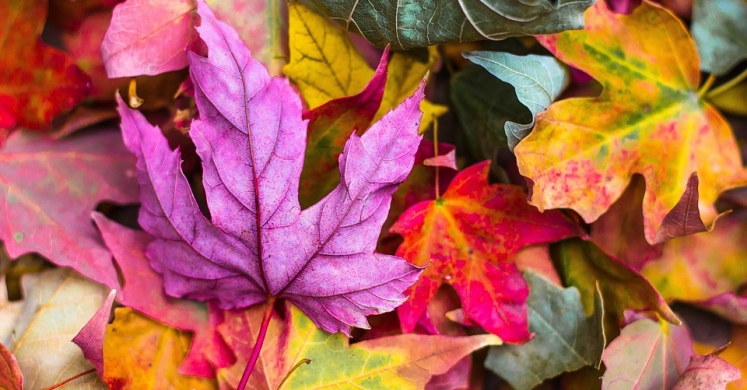Blog

#bioPGH: Fantastic Foliage and Where to Find It
 A resource of Biophilia: Pittsburgh, #bioPGH is a weekly blog and social media series that aims to encourage both children and adults to reconnect with nature and enjoy what each of our distinctive seasons has to offer.
A resource of Biophilia: Pittsburgh, #bioPGH is a weekly blog and social media series that aims to encourage both children and adults to reconnect with nature and enjoy what each of our distinctive seasons has to offer.
The days are still warm, but the cooler nights betray the change of season—autumn is here! We’re still around two to three weeks away from peak fall colors, but that should give us plenty of time to plan the perfect outdoor day to see them!
If you’re like me, you’re excited to watch leaves turn color from green to vivid reds, yellows, oranges, and even purples—but do you remember how that color change process happens? Temperature and the change in photoperiod (day length) signal for leaves to stop photosynthesis for the season, which means plants don’t need chlorophyll anymore. As the green chlorophyll in the leaves break down, the colors that emerge are from other pigments that are present in leaves, just generally in lower quantities than chlorophyll. Pigments like anthocyanins display red and purple, and carotenoids boast the yellows, reds, and oranges.
When a given area’s leaves are at their brightest colors, we see they are “at peak.” The Pennsylvania Department of Conservation of Natural Resources (DCNR) keeps a weekly fall foliage report to help us track peak foliage across the state. Northeastern Pennsylvania began changing earliest in the state with its combination of elevation and longitude—but I guess that just means we’re saving the best for last in the southwest! Though fall’s changing colors generate economic benefits through tourism, scientists have another important reason to monitor the timing and duration of autumn colors: climate change. Phenology (the timing of different events in nature) is an important part of climate science, and researchers have observed changes to a variety of other seasonal botanical processes—leaf color change is just as important to note! And don’t underestimate yourself, you can keep track of this as well. Henry David Thoreau’s journals on flowering and leafing times at Walden Pond have become invaluable to modern researchers.
But whether you are feeling inquisitive about the science or autumn or you just want to take in the beauty, we have you covered. Below are a few of the opportunities in our area to catch our forests at peak color and learn some natural history in the process!
North Park
October 17 – Latodami 50th Anniversary Fall Foliage Walk and presentation
October 26 – Indigenous Woodland Walk, Harvest, and Feast
Settlers Cabin Park
October 27 – Guided Nature Walk: Seasons and Cycles
Boyce Park
October 13 – Guided Night Hike – go early for the leaves, stay for the spooks!
October 27 – Web Catchers and Woody Plants: Colors, Shapes, Textures
Raccoon Creek State Park
October 12—Halloween Night Hike
October 13—Painting in the Outdoors
Moraine State Park via Moraine Preservation Fund
October 5, 6, 12, 13, 19, 20, 26 – Fall Foliage Cruises on Lake Arthur
Forbes State Forest
October 11—Forbes Fall Foliage for Beginners
October 12—Forbes Fall Foliage
Connecting to the Outdoors Tip: Make your own memory book or tree ID guide from fallen leaves! If you have permission to keep some of the fallen leaves in one of the parks you visit, try to collect a variety of colors and representatives from different species. You can take them home and press them either with a flower press or with heavy books (place your leaves between sheets of paper and close inside a book; weigh the book down with other books, and leave for 7-10 days.) Once the leaves are pressed, you can either laminate them or protect them on a page with a contact paper. You can use the DCNR Trees of PA guide to help you identify what you found.
Photo Credits: Cover, CC0; Header, Wikimedia User dcrjsr, CC-BY-3.0

